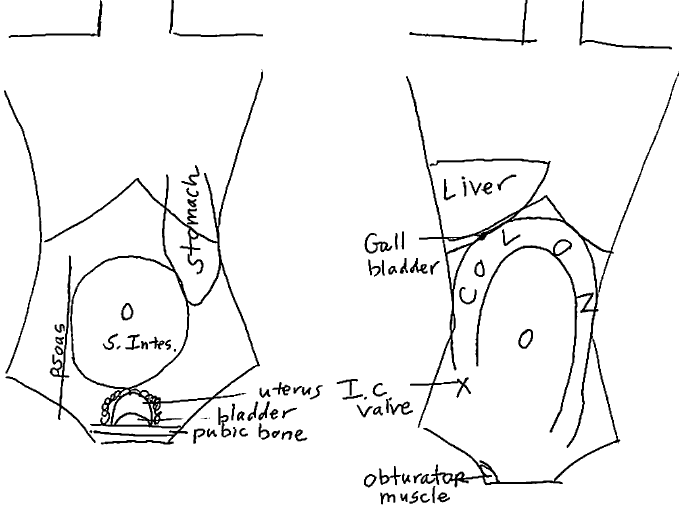Abdominal problems can really cause a lot of discomfort and make it quite hard to function (with eating, with bowel movements, with working, with sex, with lifting,…). The abdomen is involved with every movement, every function, and every breath we take. Most of us don’t know where the organs are located or what muscles exist in the abdomen, so it may seem scary when abdominal pain exists due to fear of the unknown.
I hope to give you a bit more or a working knowledge, so you can make the best decisions in finding the right solutions to solve the problem.

Whether it is a mild stomach ache, sharp pain, or stomach cramps, abdominal pain has numerous causes. These include:
Digestive difficulties, including:
Constipation or diarrhea, Gas, Ulcers, Gallstones, Kidney stones, Crohn’s disease, Gastroesophageal reflux disease (GERD), Appendicitis
Reproductive organ problems:
Menstrual cramps
Endometriosis
Ovarian pain, like PCOS
Pelvic inflammation:
Pelvic inflammatory disease
Pelvic congestion
Signs of abdominal weakness:
Hernia
Diastesis recti (a separation on the abdominal wall, common after pregnancy)
Pain when you cough or sneeze or lift
Bladder issues:
Urinary tract infection
Interstitial Cystitis
Viral or chemical irritations:
Stomach “flu”
Food poisoning
Food allergies
Muscles that can be tense and cause abdominal pain:
Psoas or iliacus
Obturator
Rectus abdominus (the sit-up muscle), obliques, tranverse abdominus (TA)
Of all these, the psoas is the most likely to be tight and cause abdominal pain. It is a long and powerful muscle, and is often a big contributor to abdominal, low-back, tailbone, and hip pains. Notice in the diagram how it looks vertical. When people describe that tension, they’ll often show me a long vertical line. It does run vertically but also diagonally from front to back.
This list is not exhaustive, but hopefully, it gives you an idea of what possible structures it may be based on anatomy alone. Also, consider when it happens; does it happen after eating (0-3 hours after eating?- think stomach, or in the middle of the night several hours after eating?- think small intestine.)
Or does it increase when you slouch or bend over; could be tight muscles contributing to increased pressures on the abdomen.
***** Specialized physical therapy, like I offer here at Radiant Physical Therapy, can help with many of the problems listed above, (with the exception of the chemical or viral factors). If you’re wondering if your problem is one that I can help resolve, call me or shoot me an email.
